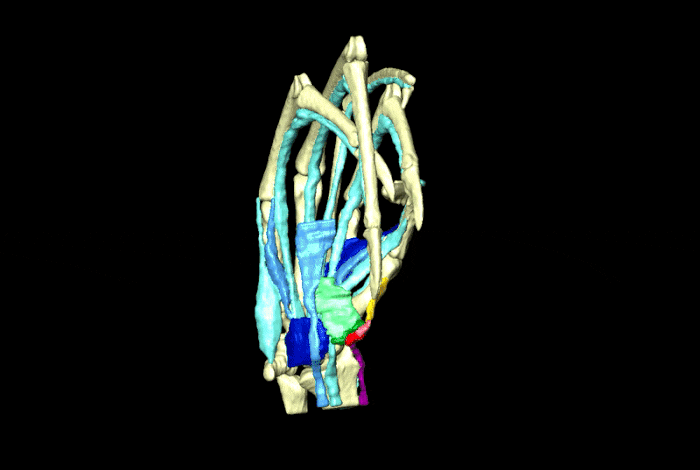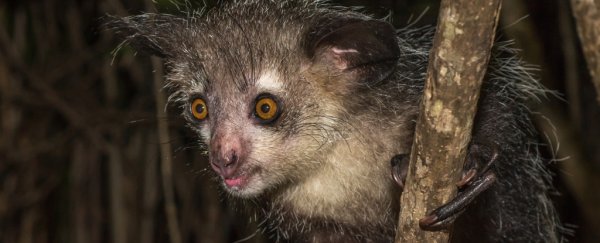One of the most elusive and peculiar lemurs in the world has just escalated the weirdness. The animal has six digits on its hands, making it the only known primate species to sport a "pseudothumb" hiding in the wrist of each arm.
Don't mistake its hidden nature for uselessness, though. The tiny extra thumb has three degrees of movement, just like a regular thumb; it can exert a great deal of force, and even has its own fingerprint.
Aye-ayes (Daubentonia madagascariensis), native to Madagascar, are completely, adorably weird. They have big round eyes and huge ears, better to suit their nocturnal lifestyle. Their fur is thick and white-tipped, giving them a roan-like appearance.
And then there are the hands, with long, spindly fingers. One finger on each hand extends centimetres longer than the others: an evolutionary adaptation for reaching into hollow logs and spearing the juicy grubs inside.
"The aye-aye has the craziest hand of any primate," said biologist Adam Hartstone-Rose of North Carolina State University.
"Their fingers have evolved to be extremely specialised - so specialised, in fact, that they aren't much help when it comes to moving through trees. When you watch them move, it looks like a strange lemur walking on spiders."
Hartstone-Rose, whose research laboratory specialises in comparative biology and functional morphology, was studying the tendons in the aye-aye's arm with colleague Edwin Dickinson, when they spotted an unusual protuberance in the wrist.
 (Edwin Dickinson/North Carolina State University)
(Edwin Dickinson/North Carolina State University)
Using digital imaging techniques - whereby a 3D digital scan of an animal's body part can be studied in detail without destroying said body part - the researchers studied the hands of six aye-ayes, male and female, across a range of ages, from juvenile to adult.
They found the digit, which they identified as a pseudothumb, on both hands of all six animals.
"The pseudothumb is definitely more than just a nub," Hartstone-Rose said.
"It has both a bone and cartilaginous extension and three distinct muscles that move it. The pseudothumb can wriggle in space and exert an amount of force equivalent to almost half the aye-aye's body weight. So it would be quite useful for gripping."
The digit is not without precedent, even though it marks a unique discovery for primates. Most famously, the giant panda (Ailuropoda melanoleuca) has just such a pseudothumb structure sticking out of its own wrist, which it uses specifically for gripping the bamboo it eats.
Digging moles also grow a second thumb out of their wrists. It's not for gripping in this case; the pseudothumb widens the animals' pawspan, presumably to make them more efficient spades. And some frogs have pseudothumbs too, increasing their digit count to five from the usual four we see in frogs.
Typically, there seems to be an advantage to these extra digits. That's likely true for the aye-aye as well, according to the researchers.
"In this case, the aye-aye's hand is so specialised for foraging an extra digit for mobility became necessary," Hartstone-Rose said.
"Some other primate species have reduced digits to aid in locomotion. The aye-aye is the first primate to dial digits up in the hand rather than dial them down.
"And it's amazing that it's been there the whole time, in this strangest of all primates, but no one has noticed it until now."

The research has been published in the American Journal of Physical Anthropology.
